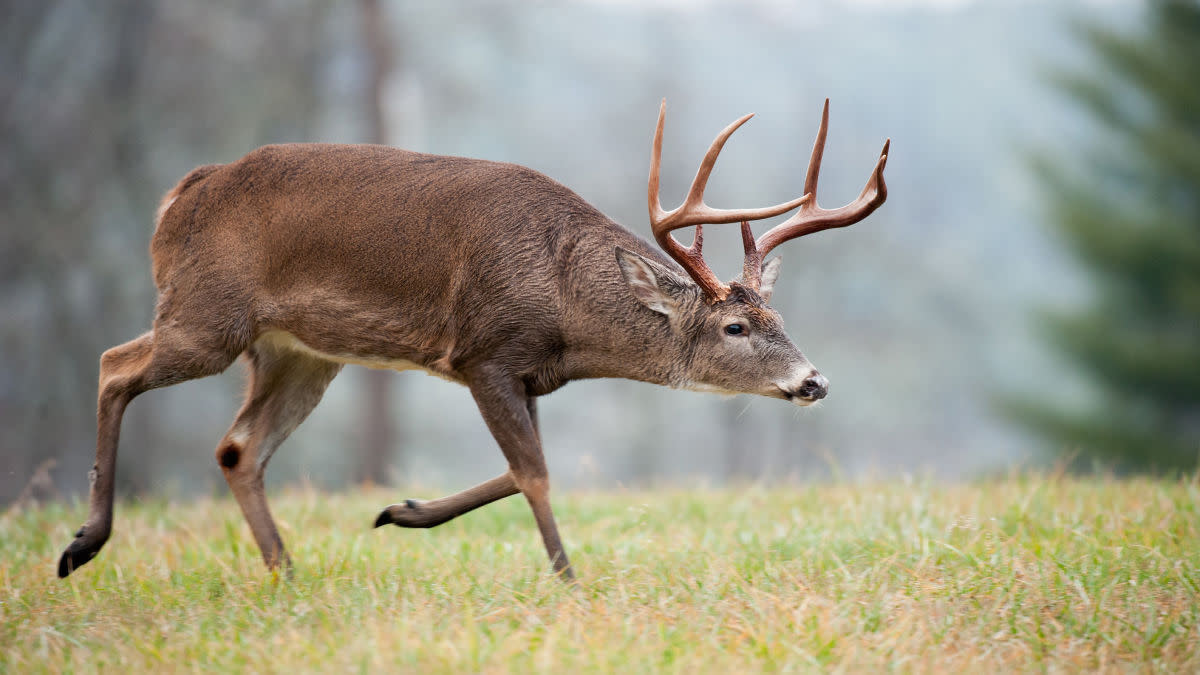
Every week this fall, I’ll be providing updates on whitetail buck movement for the entire country. These reports are based on intel from whitetailers in each region and my own observations as a traveling deer hunter. For more info like this, subscribe to the Rut Fresh Radio Podcast and Whitetail Weekly Newsletter. No one covers the rut like us.
As I said in last week’s Rut Fresh Report, the end of October is a good time to be in the whitetail woods for a bunch of reasons. Sign making is about to peak. Decoying, rattling, and grunting will work. And big bucks will be looking for the first does coming into estrus.
This is what’s referred to as the seeking phase of the rut. If you want to put daylight buck movement on a scale of 1 to 10, then last week was a 7, this week will be a 9, and next week will be a 10.
The seeking phase is what occurs right before the rut is about to bust open. Sure, you’ll see some immature bucks attempting to breed does and moving at midday, but most everything over 3.5 years old is still moving in the crepuscular periods right now.
That’ll all change between now and our next Rut Fresh Report, though. At this time next week, mature, homebody bucks are going to start disappearing and walking around at midday. They’ll abandon normal routines and be more killable than at any other point in the season. So while we’re not at that 10 out of 10 quite yet, the last few days of October and first few days of November are still a stellar time to hunt. Take advantage of it and know that the best is yet to come.
Here’s how each region breaks down for the coming week.
East
The East has been blessed with timely cold fronts for most of October. It’s been as though a whitetail hunter has been controlling the weather and making temps drop each Saturday for the last two weekends. That’s certainly not the case this weekend, though.
But that’s alright. Weather can positively impact deer movement this time of year, but it doesn’t have as much influence in the other direction. Just because highs will be in the 60s doesn’t mean mature bucks won’t be on their feet. They’ll still check scrapes almost every day, leave their beds a little earlier in the evenings, and get in their beds a little later in the mornings. Get out and hunt close to buck bedding and sign, weather be damned.
South
The weather in the South looks equally monotonous for the coming week. Sunny and 75 is great for killing a springtime gobbler, but not so much for killing a rutting buck. With no big cold front in the extended forecast, hunters can expect consistent wind directions.
This is bad news if more than 50% of your best stands are for a north wind. It’s not hard to burn out sets that are near bedding during the rut, so you’ll need to get creative to beat the battering of predicted south winds. You can do this by getting mobile with climbing sticks and a lightweight stand or saddle, or slipping into areas at midday or after a rain to hang new sets. Don’t get caught off guard by too many south winds this rut.
Midwest
Stop me if you’ve heard this one before: The weather isn’t exactly ideal for this coming week. Like hunters in the South, whitetailers in the Heartland need to prepare for lots of south winds in the next 10 days. If you plan to get in tight to bedding areas (which you should), consider how many sits one tree can take before it’s burned out on that wind direction.
The good news is that Midwesterners should have a superior rut to 2019 for one major reason—crop harvest. Last year corn was late getting out of the fields for most of the region, which concealed rutting activity for many hunters. This year harvest has been on time or ahead of schedule for most states, kicking deer out of ag fields before the best part of hunting season. Expect to see more visible seeking, chasing, and general rut behavior in 2020.
West
It’s damn near impossible to believe after last weekend, but warm weather is also in the forecast for Western whitetail hunters. Last weekend had record-setting lows and plenty of snow, which temporarily caused deer to behave like it was post-rut in late November. That’s why I wouldn’t let much of what you saw last weekend influence how you hunt this weekend.
For example, if you noticed mature bucks bedding in irrigated fields last weekend, I wouldn’t expect them to be doing the same this week. The mild weather will have them back in cover checking scrapes and looking to harass does. You might still catch them visiting agriculture in the evenings, but don’t think their movements will just be limited to those areas again. If you didn’t hunt last weekend, use the melting snow and muddy earth to find current sign. Now more than ever, beds and scrapes will be obvious.
Feature image via Matt Hansen.



